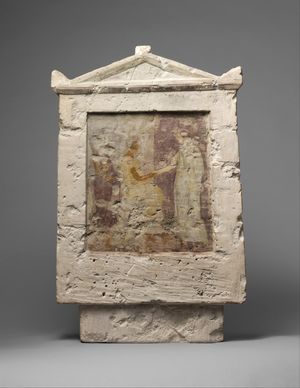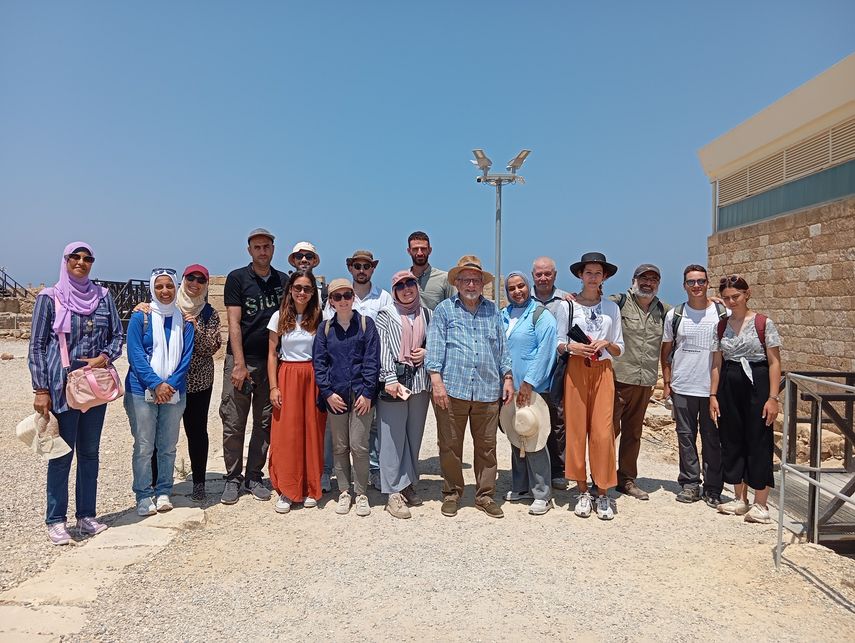II. THE SOCIAL VALUE OF FUNERARY ART
(Paphos, Summer 2025)
Even though at death the social persona may undergo major changes, by studying funerary customs we can greatly gain in the understanding of a community’s social structure, distribution of wealth and property, degree of flexibility or divisiveness in the apportionment of power. With its great regional diversity and variety of community forms and networks, the eastern Mediterranean offers a unique context for exploring, through funerary art, how communities developed and commemorated their members. The international Workshop will bring together scholars on funerary art in the eastern Mediterranean of the 4th to the 1st c. BCE, to present thematic and interdisciplinary ways of analysis (e.g. temporal, regional, intra- or inter-regional, local, structural) in which funerary art may or may not provide insights on individuals, social groups and communities. The aim is to discuss themes such as, but not limited to: the placement of the dead bodies in the landscape and the extent to which this is indicative of issues of territoriality; the social role of particular groups of people (e.g. children, women, the elderly, elite or non-elite individuals, priests/-esses, expats, etc) and the ways this can be reconstructed from the fashion in which these roles are expressed or negotiated in funerary art; the impact that major historical phenomena (e.g. war, famine, earthquakes, urbanization, synoecism) may have had on funerary art; and more.
The Program’s 2nd Workshop was held, as planned, in Paphos between June 10 and 19, 2025 under the title “The Social Value of Funerary Art”. The final list of Junior Participants included scholars affiliated with Egyptian and Greek Universities.
In addition to Professors Haggag, Plantzos, and Dimakis, the Paphos Workshop also featured lectures and on-site classes by Cypriot archaeologists such as Emeritus Professor Dimitris Michaelides, former Director of the Department of Antiquities of Cyprus Dr Sophocles Hadjisavvas, prof. em. Maria Iacovou, NKUA Professor Kostas Kopanias, and archaeological officers of the Department of Antiquities of Cyprus, Stathis Raptou, Yiannis Violaris, and Margarita Kouali. Seminars were also offered by Prof. Joan Connelly (NYU), Prof. Ewdoksia Papuci-Władyka (Jagiellonian University), and Dr Thanasis Koutoupas (Cyprus Institute).
The Workshop’s full program was as follows:
PROGRAMME
WEDNESDAY 11 JUNE
08.30-13.00 site visit: Amathous, and Limassol archaeological museum (instructor Y. Violaris, Department of Antiquities)
18.00-18.30 inauguration: Workshop introduction by Prof. D. Plantzos (National & Kapodistrian University of Athens) and Prof. Emer. M. Haggag (Alexandria University – Archaeological Society of Alexandria)
18.30-20.00 guest lecturer: Palaepaphos-Marchello, Cyprus (2021–2024): New Archaeological Discoveries and Historical Perspectives (Prof. K. Kopanias, National & Kapodistrian University of Athens)
THURSDAY 12 JUNE
08.30-13.00 site visit: Palaipaphos archaeological site (instructor Prof. Μ. Iakovou, University of Cyprus)
18.00-20.00 guest lecturer: Hellenistic and Roman Nea Paphos (Prof. Emer. D. Michaelides, University of Cyprus)
FRIDAY 13 JUNE
08.30-13.30 site visit: Nea Paphos archaeological site
18.00-20.00 guest lecturer: Burial Practices in Paphos: A Journey from Nikokles to Ptolemy of Cyprus - an overview of 1977-1990 excavations at Paphos (Dir. Emer. S. Hadjisavvas, Department of Antiquities)
SATURDAY 14 JUNE
08.30-13.30 site visit: Tombs of the Kings (instructor Dir. Emer. S. Hadjisavvas)
18.00-20.00 guest lecturer: Recent Excavations in the Necropoleis of Paphos and environs. New Finds and Interpretations (Dr. St. Raptou, Department of Antiquities)
SUNDAY 15 JUNE
08.30-13.30 site visit: Paphos archaeological museum, and tombs in the ‘Ano Poli’ of Paphos (instructor Dr. St. Raptou)
18.00-20.00 guest lecturer: Hellenistic and Roman funerary architecture and wall paintings. Reflections of Alexandria (Prof. Emer. D. Michaelides, University of Cyprus)
MONDAY 16 JUNE
08.30-13.30 site visit: Tombs Ammi Ι and ΙΙ, Silver house, Homerou (instructor Prof. Emer. D. Michaelides)
18.00-20.00 guest lecturer: Preserving Fragile Histories: 3D Documentation of the Shatby Necropolis and the Broader Challenge of Endangered Heritage (Ath. Koutoupas, STARC)
TUESDAY 17 JUNE
08.30-13.30 site visit: Pegia region archaeological sites (instructor Prof. J. Connelly, New York University)
*All lectures are hosted at the American University of Beirut – Mediterraneo in Paphos
Support for this Program is provided by the Getty Foundation as part of its Connecting Art Histories initiative.


